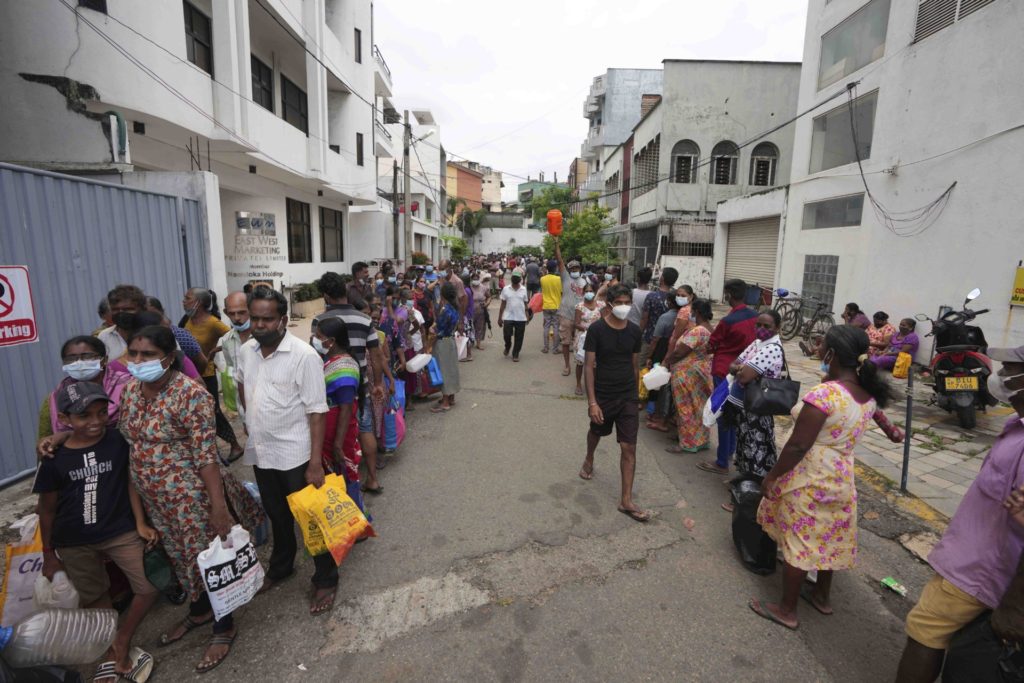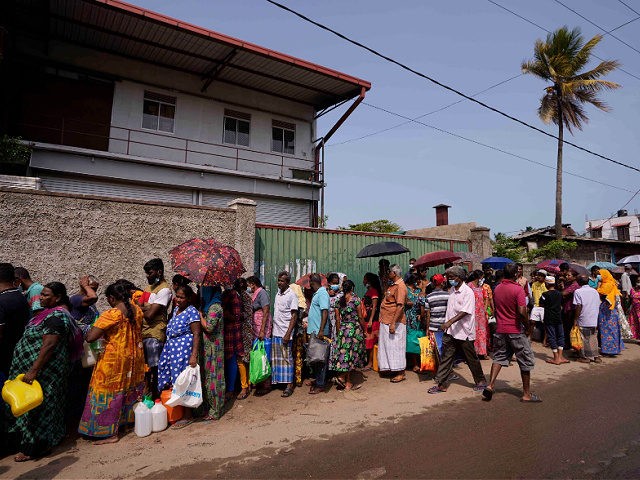A Sri Lankan petroleum industry leader told reporters Thursday there is a limited amount of fuel to distribute among Sri Lankans and this supply is expected to last no more than two to three days, Sri Lanka’s Daily Mirror reported.
“Since there is a limited amount of diesel; Essential services will receive that. There is petrol for next 2 to 3 days [sic],” the newspaper quoted D.V. Shantha Silva, the joint Secretary of the Sri Lanka Petroleum Private Tanker Owners’ Association (SLPPTOA), as saying on May 12.
It was unclear if Silva referred to a quantity of fuel controlled exclusively by the private SLPPTOA or a state-owned store of petroleum. Traders in Sri Lanka have been unable to pay for imported fuel shipments since at least February due to a shortage of foreign currency reserves in the country. Sri Lanka’s inability to secure steady imports of fuel forced the state to ration electricity via rolling blackouts starting in March due to a lack of oil needed to power the state’s thermal generators.
These state-mandated power cuts have continued across Sri Lanka regularly since March. The local news website Ada Derana revealed Sri Lankans nationwide would face blackouts for up to five consecutive hours on May 12.

Sri Lankans queue up near a fuel station to buy kerosene in Colombo, Sri Lanka, Tuesday, April 12, 2022. (AP Photo/Eranga Jayawardena, File)
Sri Lanka’s Daily Mirror on Thursday published photos of people “standing in long queues to buy kerosene” on Wednesday in Kotahena, a suburb of the national capital, Colombo.
Sri Lanka’s ongoing shortage of foreign currency reserves grew dire in early March as the import-dependent island nation, located in the Indian Ocean, became incapable of purchasing vital imported goods including fuel, food, and medicines. While observers have said the Chinese coronavirus pandemic is largely responsible for cutting Sri Lanka off from its usual sources of foreign currency (namely tourism and remittances from Sri Lankans abroad), many people on the island have blamed Sri Lanka’s government for the lack of funds and resultant product shortages.
An anti-government sentiment manifested in Sri Lanka in the form of mass protests calling for the resignation of the nation’s entire Cabinet starting in early March. The demonstrations turned to riots in Colombo on the night of March 31 when hundreds of people — some wielding clubs and stones — mobbed the personal residence of Sri Lankan President Gotabaya Rajapaksa in an attempt to storm his home. The mob’s intimidation tactic seemingly succeeded three days later when nearly all of Sri Lanka’s Cabinet, save for President Gotabaya and Sri Lankan Prime Minister Mahinda Rajapaksa (Gotabaya’s brother), resigned on April 3.
Protests calling for Gotabaya to step down continued in Colombo from early April to early May. The demonstrations took an unprecedented turn toward extreme violence on May 9 when anti-government rioters set fire to 50-plus homes owned by Sri Lankan government officials, including several Rajapaksa family members. Mahinda Rajapaksa tendered his resignation as prime minister in response to rising pressure from Colombo’s anti-government mob shortly before an unknown number of people burned his residence to the ground on the night of May 9.

COMMENTS
Please let us know if you're having issues with commenting.